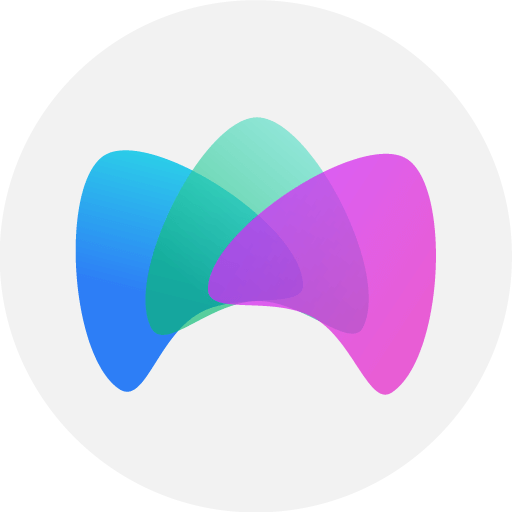
Remote monitoring and management software, often abbreviated as RMM, is a solution that allows you to monitor and manage your computer networks from a remote location.
What does RMM software do?
Summarize with
Table of contents
- What does RMM software do?
- Remote access
- Remote management
- Remote monitoring
- Remote support
- Reporting
- What are the benefits of the software to businesses?
- How much does remote monitoring and management solution cost?
- What are the key features of the tool?
- How does the software protect businesses from cyberattacks?
- What factors should you consider before purchasing the tool?
- Innovate your business with remote monitoring and management software
- Final words
- FAQ
IT service providers can use this system to monitor client servers, desktops, laptops, and other devices in their network. The tool helps them detect and fix issues before they cause significant problems.
Additionally, RMM software allows IT companies to automate tasks and improve clients’ overall network security. If you’re planning to implement an RMM solution in your business, here’s what you need to know about what it does and how it can benefit your organization.
RMM software helps managed service providers (MSPs) to remotely and proactively monitor their client’s endpoints, networks, and devices. The solution is essential for MSPs as they provide a higher level of service to clients by proactively managing and monitoring their IT infrastructure and data. Moreover, RMM software enables them to reduce costs by lessening the need for on-site visits.
The specific features of the tool vary depending on the vendor, but most RMM platforms provide the following five core functions:
Remote access
RMM software allows IT professionals to access and control computer systems and networks from anywhere in the world. This is useful for managing, making changes, and troubleshooting problems without physically going to the client’s site. For instance, if your business is an online learning service that hosts virtual training sessions, remote access would allow IT experts to join the session and offer assistance if needed without being on-site.
By the way, you can host online meeting with MyOwnConference from any place and anytime.
Remote management
Besides access, one of the functions of RMM is remote management. The solution provides a central platform for managing all aspects of client systems, including patching, configurations, and user management. Likewise, it can monitor network performance, deploy updates, and more.
Remote monitoring
Another primary function of the tool is remote monitoring. RMM software continuously monitors client systems for any potential issues. These include monitoring for high CPU usage and low disk space. If the system detects any problem, the RMM platform will generate an alert, so IT professionals can act accordingly.
Remote support
Also, an RMM solution offers tools that make it easier to provide remote support to users. These elements can remotely connect to computers, share screens, and provide chat support. Additionally, some platforms include features that allow technicians to remotely control devices as if they’re sitting in front of them. This can be beneficial when troubleshooting issues or providing training.
For instance, if your organization frequently organizes and hosts webinars or video conferences, remote support allows your IT staff to offer live assistance during these online events.
Reporting
Finally, RMM software generates reports that give insights into client system activity logs, health, and performance. These reports can identify trends and potential risks before they escalate into larger incidents.
What are the benefits of the software to businesses?
With all the functions RMM software provides, it’s no surprise that the tool offers many benefits to businesses. Below are some gains of the platform that IT companies value most:
Automates routine IT tasks
RMM systems improve efficiency by automating various IT tasks that employees would otherwise perform manually. For example, the tool can automatically patch software vulnerabilities, install updates, and run security scans. This frees IT technicians to focus on more strategic projects, such as planning and implementing new features and technologies.
Scales down costs
Moreover, implementing the software can scale down IT expenses by eliminating the need for on-site technicians. Also, since the solution consolidates IT management into a single platform, companies save on overhead costs from managing multiple disparate systems. In addition, it often comes with built-in tools for cost optimization, such as energy management and capacity planning.
As countless businesses are shifting online, as well as learning and training institutions, RMM software is becoming an increasingly attractive solution for its cost-effectiveness.
Provides valuable insights
Lastly, the platform provides businesses with valuable insights into their overall infrastructure. This helps them make informed decisions about software upgrades and future IT projects.
How much does remote monitoring and management solution cost?
A recent study estimates that the global managed services market will reach $354.8 billion by the year 2026, coming from $242.9 billion in 2021. RMM is a growing industry, and there’s no one-size-fits-all answer to how much the solution costs. The price will vary depending on your specific features and capabilities. However, some general guidelines can help you estimate the software cost.
The first item to assess is the size of your team. A small business typically needs a less comprehensive platform than a large enterprise. The number of devices the system will monitor also affects the price. For example, a simple RMM software for 10 devices might cost around $100 per month. Meanwhile, a more complex solution for 1,000 devices could cost $1,000 per month or more.
Another component to consider is the level of support that you need. Some service providers offer 24/7 support, while others only assist during business hours. If you have a complex network or require specialized features, you might need to pay more for RMM software that includes round-the-clock support.
Ultimately, the ideal way to find out how much the system will cost is to request quotes from various providers. Make sure to specify your network requirements clearly to compare apples to apples. With thorough research, you will find the software that suits your budget and meets your needs.
What are the key features of the tool?
Some of the key features to look for in an RMM software include:
- Asset tracking: This component allows you to keep track of all devices in your network, including computers, laptops, servers, and printers. You can usually view information such as the make, model, and serial number of each device.
- Integrations: Most RMM platforms today can integrate with other software products such as help desk and inventory systems. If your organization regularly hosts online events to market your products or service, investing in one of the best inventory software in 20223 is a worthwhile decision.
- Alerts: Additionally, the tool can generate warnings when it meets certain conditions, such as when devices go offline, or a user accesses a restricted website. The system can send alerts to support staff via email, text message, or push notification.
How does the software protect businesses from cyberattacks?
Today cyberattacks are becoming more and more prevalent. Hackers are constantly finding new ways to exploit vulnerabilities in systems, often with devastating results. RMM software can help businesses protect themselves against these attacks in several ways.
For example, the platform can monitor network activity for signs of possible intrusions. They can likewise patch vulnerabilities in systems and applications before attackers have a chance to exploit them. Additionally, the solution can create backups of critical data so that businesses can restore the system if cyber criminals compromise the system. Thus, RMM software is a powerful tool to help companies protect themselves from cyberattacks.
What factors should you consider before purchasing the tool?
As more companies move to digital operations, the need for RMM solutions also increases. However, with so many options on the market, it can be tough to know which software is right for your business. Below are a few elements to explore before making your purchase:
- Company size: How big is your business? If you have a large enterprise, you’ll need an RMM solution that can handle a lot of data and users. In contrast, if you have a small organization, you might not need all the bells and whistles of a complex system.
- Monitoring requirement: What kind of monitoring do you need? Some RMM platforms simply monitor devices, while others provide manageability features such as software deployment and patch management.
- Compatibility: Is it compatible with your existing framework? For example, if you’re using QuickBooks Online or Yooz to monitor expenses and process invoices, you’ll want to ensure that the software you choose can integrate with your current applications and systems. Otherwise, you’ll end up with many added complexities.
- Ease of setting up: How quick is it to install? You’ll want to avoid spending hours setting up and configuring the platform. Look for an intuitive solution that’s simple to use from day one.
Selecting the right RMM software for your business ensures that your online operations are secure and running smoothly.
Innovate your business with remote monitoring and management software
RMM software is a valuable tool for businesses of all sizes. It’s an excellent way for companies to monitor their systems and networks while protecting themselves from cyberattacks. In addition, the solution offers various benefits, such as enhancing system performance, reducing costs, and securing data. Before making any purchase, consider all the factors to ensure you get the best possible solution for your needs.
Final words
In conclusion, remote monitoring and management (RMM) software is an essential tool that supports modern IT operations and managed service providers. It combines remote access, centralized management, continuous monitoring, remote support features and detailed reporting in one easy-to-use platform. By automating daily tasks and limiting the need for on-site visits, organizations can scale more efficiently, gain better insight into their systems and strengthen security. Choosing the right RMM solution means matching your company size, device range, integration needs and budget with a system that helps maintain operations, improve efficiency and protect all devices and networks with RMM software.
FAQ
RMM software (Remote Monitoring and Management) is a solution that allows IT providers to monitor and manage devices, networks and endpoints remotely from anywhere. It helps detect issues early, control client systems, apply updates and manage configurations without always being on-site.
Typical features include remote access to devices, remote management (for patching, configuration and user management), constant monitoring for resource and performance issues, remote support tools and reporting with analytics. Together they form the core capabilities that help IT teams proactively maintain infrastructure.
Businesses benefit by automating routine IT tasks, reducing on-site visits and therefore costs, gaining insights into their infrastructure and improving security posture. In short, they get improved efficiency, better system reliability and lower operational overhead.
You should consider your company size, how many devices you need to monitor, the level of remote support needed, compatibility with existing systems and ease of setup. Choosing the right tool depends on aligning features, scalability and cost with your actual IT environment.
The cost varies widely because pricing depends on number of devices, complexity of features, level of support (for example 24/7 vs business-hours) and vendor. A small business might pay around $100 per month for basic monitoring of a few devices whereas large enterprises with thousands of endpoints could pay much more.

Dedicated to enhancing your online meetings and webinars in today’s digital-first era. Join us as we share in-depth insights, proven strategies, and expert guidance on organizing, promoting, and excelling at virtual events and conferences.











